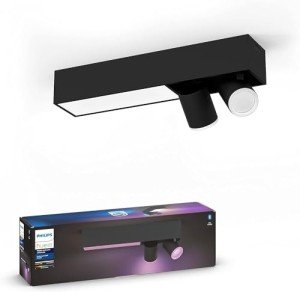The Biggest Sources Of Inspiration Of Contemporary Lighting UK
Contemporary Lighting in the UK: Transforming Spaces with Illumination
Lighting plays an important function in specifying the atmosphere and functionality of any space. In the UK, contemporary lighting has actually emerged as a significant style aspect, providing ingenious services that mix visual appeals with practicality. This short article looks into the various styles, materials, and technologies forming contemporary lighting, along with pointers for choosing the most appropriate fixtures for various settings.
The Evolution of Contemporary Lighting
Contemporary lighting in the UK reflects the changing tastes and technological developments in design. It encapsulates a broad range of styles, consisting of:
Minimalist: Characterized by simpleness and clean lines, minimalist lighting fixtures focus on kind and function without unnecessary decorations.
Industrial: Inspired by urban settings, industrial lighting integrates basic materials like metals and woods with strong designs, developing edgy, functional pieces.
Scandinavian: Known for its heat and simpleness, Scandinavian lighting frequently includes soft colors and natural products, focusing on creating a relaxing environment.
Smart Lighting: This modern pattern integrates technology with design, permitting users to manage their lighting with mobile apps, voice commands, or automation systems.
To illustrate the development and range in the field of contemporary lighting, think about the table below, which highlights key attributes of various designs.
Style
Key Characteristics
Popular Materials
Perfect Spaces
Minimalist
Basic, practical designs
Metal, glass, wood
Modern homes, offices
Industrial
Raw, incomplete look
Steel, concrete, wood
Lofts, galleries
Scandinavian
Relaxing, warm looks
Natural fibers, light wood
Living rooms, coffee shops
Smart
Integrated innovation, automation
Differs commonly
Homes, offices, retail spaces
Picking Contemporary Lighting Fixtures
Picking the right lighting fixtures for an area needs careful consideration of numerous elements. Here are key elements to keep in mind:
1. Purpose of the Space
Before picking fixtures, think about the desired use of the area. Different functions need various types of lighting:
- Task Lighting: Focused lighting for activities such as reading, cooking, or studying. Buy Lighting Fixtures UK consist of table lamps and under-cabinet lights.
- Ambient Lighting: General lighting that supplies total illumination. Ceiling lights and pendant fixtures fall under this classification.
- Accent Lighting: Designed to highlight specific functions or locations, such as artwork or architectural details. Wall sconces and mounted lights prevail options.
2. Design and Theme
The lighting needs to match the existing design. Select fixtures that match or enhance the overall style of the space, whether it's contemporary, rustic, or eclectic.
3. Size and Scale
Think about the percentage of the lighting fixtures relative to the space. A big chandelier may look sensational above a roomy table, while smaller pendant lights work well in compact settings.
4. Energy Efficiency
With increasing energy costs and ecological concerns, choosing energy-efficient lighting alternatives is essential. LED lights are an outstanding choice, providing longevity and lower energy intake.
5. Versatility
In modern design, adaptability is crucial. Fixtures that can be adjusted or rearranged boost functionality, enabling users to produce various atmospheres as required.
Popular Contemporary Lighting Brands in the UK
The contemporary lighting market in the UK boasts many brand names understood for their ingenious designs and quality craftsmanship. Some noteworthy discusses include:
- FLOS: An Italian brand name celebrated for its creative and iconic lighting fixtures that often function as pieces of art.
- Tom Dixon: A British designer recognized for his modern, industrial styles that wonderfully include metal and light.
- Anglepoise: Known for its versatile, practical lamps, perfect for a range of settings from office to imaginative studios.
- John Lewis: Offers a range of contemporary lighting options that deal with a wider audience, consisting of affordable yet stylish choices.
Frequently Asked Questions about Contemporary Lighting in the UK
1. What is contemporary lighting?
Contemporary lighting refers to lighting styles and fixtures that show present design patterns, frequently characterized by tidy lines, innovative shapes, and making use of modern materials and technologies.
2. How do I select the best lighting for my home?
Consider the function of the room, existing decoration, size of fixtures, energy performance, and versatility. Examine how each piece will contribute to the general atmosphere and performance of your area.
3. What are some energy-efficient lighting alternatives readily available in the UK?
LED lights are the most popular energy-efficient choice, known for their long life expectancy and low energy consumption. Compact fluorescent lights (CFLs) and halogen bulbs are other options.
4. Where can I shop for contemporary lighting in the UK?
Contemporary lighting can be discovered in numerous retail outlets, both online and in physical shops. Significant merchants consist of John Lewis, Habitat, and specialized lighting shops.
5. Can contemporary lighting operate in traditional areas?
Definitely! Contemporary lighting can enhance traditional spaces when picked thoughtfully. Choosing fixtures with a balance in between modern and traditional components can develop a harmonious design.
Contemporary lighting in the UK represents more than simply lighting; it embodies design innovation and creativity, transforming areas and enhancing functionality. As patterns continue to develop, homeowners and designers alike can check out an expansive variety of styles and innovations, guaranteeing that every room bursts with life, heat, and character. By considering the necessary aspects described in this article, one can curate a collection of lighting fixtures that resonates with individual style and meets practical requirements, eventually shaping comfortable and visually attractive environments.
